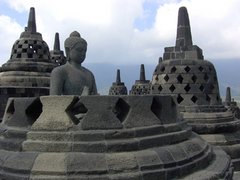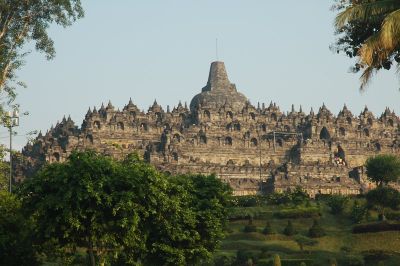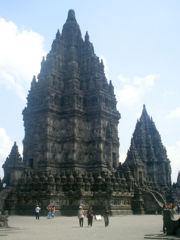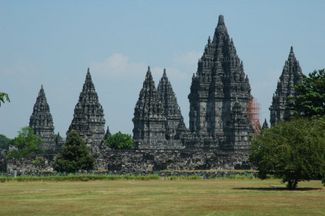| Built over a period of some 75 years in the 8th and 9th
centuries by the kingdom of Sailendra, Borobudur is the
largest Buddhist monument in the world. Constructed out of an
estimated 1,600,000 blocks of volcanic stone, dredged from the river and
assembled solely by human labor, the nine-terraced temple is a
representation of the transition towards nirvana and is famed for
its 1,500 intricately carved reliefs, covering a total length of five
kilometers end-to-end. The volcanic Mount Merapi, one of the most active
volcanoes on Java, can be seen steaming on the horizon directly north of
the site.
The first archaeological study of the site was initiated in 1814 by
Sir Stamford Raffles, founder of
Singapore.
First restored in 1907, the monument suffered from neglect and war and
was once more in effect rebuilt in the 1970s under the guidance of
UNESCO, who designated Borobudur as a
World Heritage Site. The massive restoration process involved the
removal and refurbishing of over one million blocks, rebuilding the
foundation and adding drainage systems.
  |
Prambanan is a collection of massive Hindu temples (candi)
built by the 10th century Mataram Kingdom, rulers of central Java
and defeaters of the Sailendra Dynasty. A
UNESCO World Heritage Site, in most any other country constructions
on the scale of Prambanan would be quickly designated as a national
symbol, but in Indonesia they are somewhat overshadowed by the even more
awe-inspiring bulk of
Borobudur
just next door. The two sites are quite different in style though, with
Prambanan being a collection of sharp, jagged pyramids instead of the
vast horizontal bulk of
Borobudur,
and both are well worth a visit.


|




